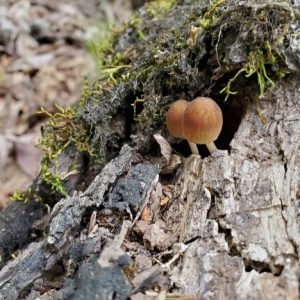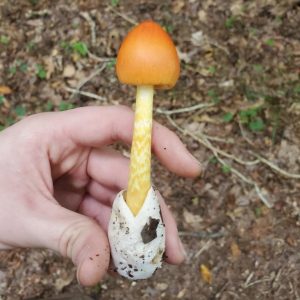by Valerie Lawhorn
The itch of powerlessness had reached a fever pitch in aisle H40 of the local Walmart. It wasn’t from the haphazard scarf wrapped around my nose and mouth, though that did bring its fair share of discomfort. It was the maskless woman coughing while approaching us. A family to our right had blocked our exit. My fiancée still scrambled to find the materials to make us masks, as if her rushed endeavor could shield us yet. The woman closed in, and sneezed.
My voice cracked as I asked Allison, “Do you want to go foraging?”
“What?”
I had lifted a sweaty hand to adjust my scarf and thought better of it, “In the woods, we can get wild onions and stuff, I heard there’s a bunch by the highway.”
“I don’t want to go by the highway.”
“No, the woods.”
The woman had now disappeared down the aisle for plates, and the family had dislodged themselves and floated along. Allison turned to me holding the fabric she had been looking for. She was wearing the only mask we had between the two of us, scored because she had a checkup. We had baked it in the sun each day hoping it was enough. “You know, I think I’d like that.”
A lot went into humanity’s process of learning edibility. It wasn’t a process everyone survived. We didn’t want to replicate that in miniature, so I invested in three books about plants and mushrooms in our geographic region. Soon we were pretty geared up with waterproof backpacks, trowels, and so much bug spray. Let me warn you now, you’ve never seen so many ticks. And there is more than Lyme Disease. Ever heard of Bourbon Virus? Neither had the medical community until a man in Bourbon, Kansas died of tick bites about maybe ten or so years ago. The virus is so new, in fact, that it is untreatable. They try and keep you out of pain and cross their fingers. It probably seems counterintuitive to escape the stress of one deadly incurable virus for another, but long socks weren’t in short supply and I only got bit once.

The day our books arrived, time had already died so we put on our sunhats and hit the road. We drove out into the more rural fringes of town; the worst thing to find on trails these days were people. It had rained the day before, which set a heavy haze on the ground, mimicking an Alabama August. Despite the misery, we were excited. Rain, we had learned, meant new mushrooms had released their spores. It was a race to find them before the bugs had their way. It didn’t take us long to find our first specimen. Early in the trail, a partially burnt tree blocked our path. The wood was exploded and warped from a lightning blast. In the charred wreckage we found two small brown mushrooms, which we spent the next hour trying to classify. Galerina marginata, in case you were wondering. Also known as the “funeral bell”. It has the same poison as the “death cap” mushroom, which accounts for about 9/10 mushroom deaths. Obviously, we were psyched.

The finds became easier to identify, and often less deadly. We found a mushroom delicacy enjoyed by Roman emperors (or at least a sister species). We found wild blackberries, and black walnut trees. We found berries that were used in chemical warfare in WWI. We also discovered we weren’t the only mushroom hunters in the area. Look-alikes for a species that were utilized by native cultures for hallucinatory properties had been scattered upside-down between late evenings and early mornings. Also on the hunt were small animals, with bites marring the flesh of new discoveries. What happened in the woods became more familiar and tangible than the world we peered at through our screens. Less disorienting than the anger and the cases and the ever-growing list of names and the protests and the arrests and the danger and the death and
